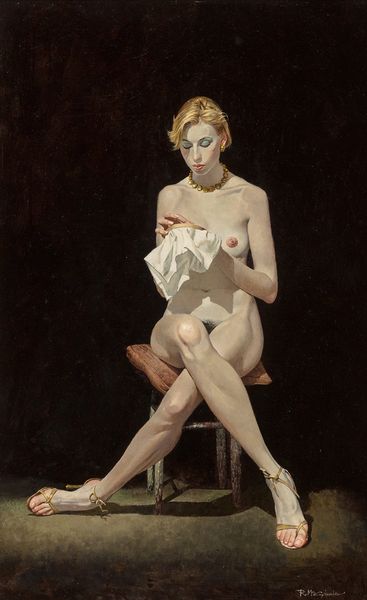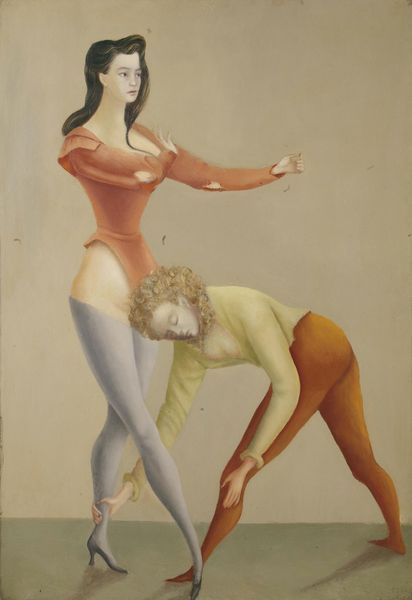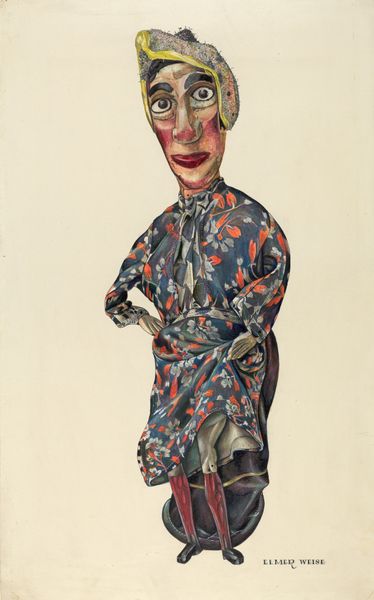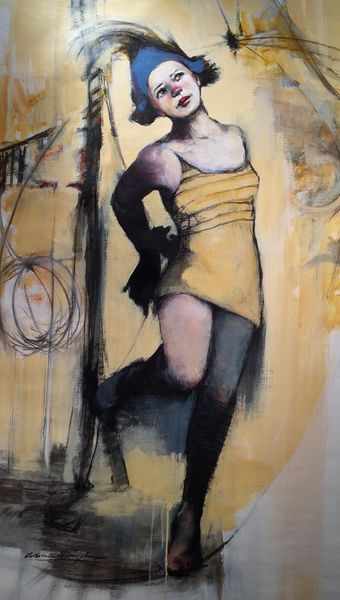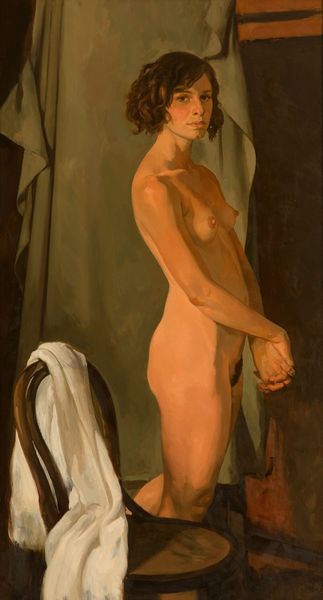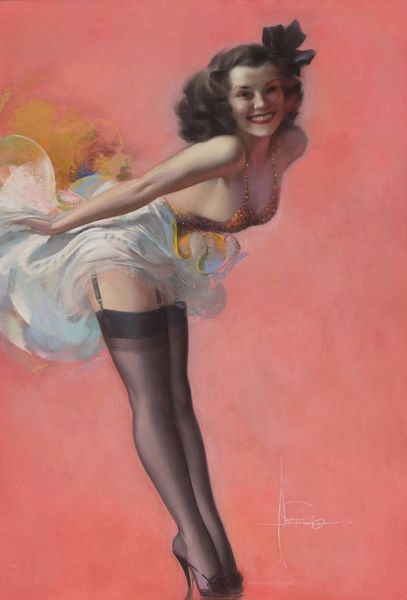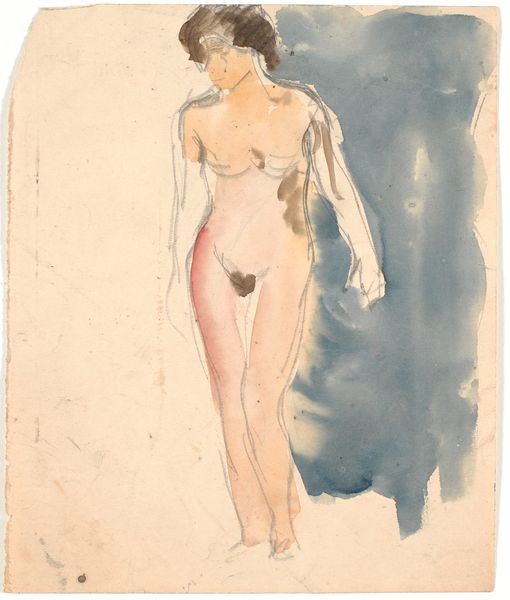
painting, plein-air
#
portrait
#
painting
#
plein-air
#
genre-painting
#
portrait art
Copyright: Modern Artists: Artvee
Editor: So, here we have Rolf Armstrong’s “Hi, Neighbor!” from around 1944. It’s a painting, looks like it could be plein-air, depicting a woman in what I guess is a “Mexican” inspired outfit, a “pin-up”. I can’t help but wonder: what do you make of it? Curator: The image certainly invites us to consider the construction of identity through clothing. In the context of 1940s America, where intercultural relations were being reshaped by global events, what does this artist want to evoke by draping this white woman in a costume coded as foreign and “neighborly”? Does the title play on notions of familiarity and accessibility, masking an exoticized “other?” Editor: That is so insightful, I didn’t think about how the title kind of clashes with what is represented. Why choose to give it such a culturally-insensitive painting this particular title? Curator: Exactly! We need to delve deeper. How does the “pin-up” element play into this? During wartime, such images often served as morale boosters, embodying an ideal of feminine desirability. Does Armstrong potentially exploit this woman by using racial and cultural connotations as props? It's imperative to confront how cultural representation intersects with broader narratives of power and objectification. Editor: That connection to wartime propaganda is very clarifying. I’m now also aware how this artwork could promote particular attitudes toward nationality during a time of conflict and possible solidarity. It is a little disturbing. Curator: Right. Also note how her light skin and exaggerated features conform to the aesthetic preferences of the dominant culture. The artwork is clearly rooted in privilege. Armstrong’s portrayal reinforces existing hierarchies, underscoring the importance of intersectional analyses when looking at images that at first might simply seem “decorative” or “pretty.” Editor: This has completely changed my perspective! Seeing this through the lens of cultural politics has really made me rethink the image. Thank you so much. Curator: My pleasure. These seemingly harmless pieces are, actually, great reminders to constantly question the underlying ideologies that underpin art.
Comments
No comments
Be the first to comment and join the conversation on the ultimate creative platform.



